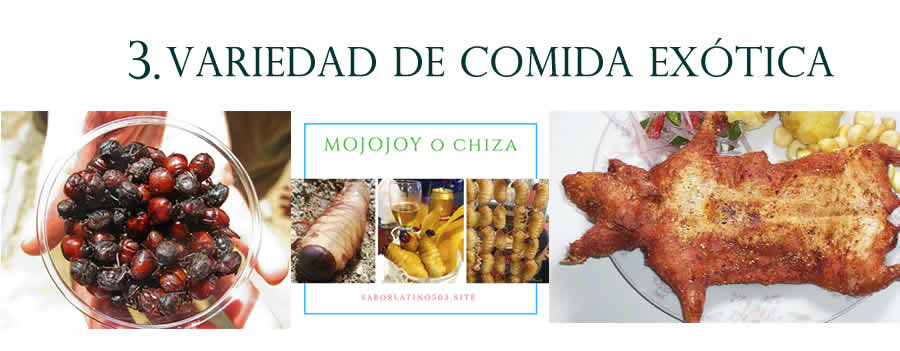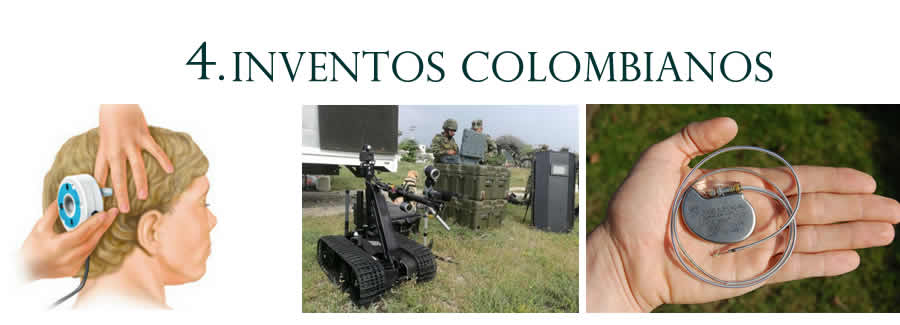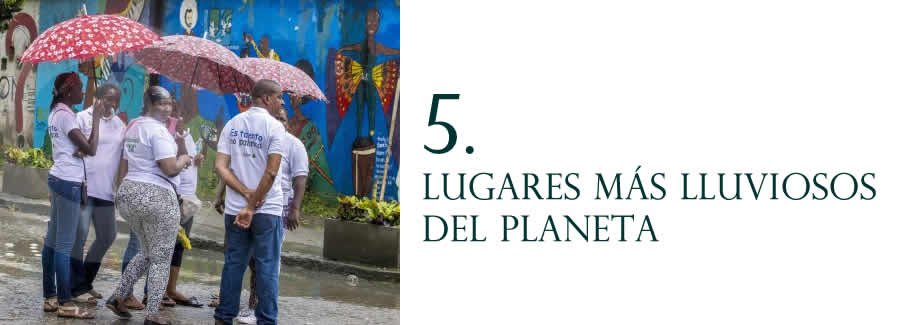Colombia is a lucky country, with so many riches that dazzle its people and visitors. Today I want to talk to you about 5 curious and valuable facts about Colombia.
Without further ado, let's get started!
Colombia has a great wealth of biodiversity
Colombia It is the second country with the greatest biodiversity on the planet and the curious thing about this is that half of the country is made up of forests, home to many different species of plants. There is no exact data, but it is estimated that there are approximately 45.000 to 48.000, which is equivalent to 20% of all species worldwide. This is considered very high considering the size of the country.
Colombia has 456 known species of mammals and 520 of reptiles. It also has 59 designated protected areas, has 311 types of coastal and continental ecosystems; from the Amazon to the Guajira, and from the Pacific coast to the Orinoquía, it has valleys and mountains, with rivers, seas and beaches, with flora, fauna, fruits and coffee.
In this beautiful country you can find a wide variety of birds: there are 1912 species, a fact that puts us in first place as the most diverse country in the world in terms of birdlife. Also, 3.500 species of orchids, 700 species of frogs, 3.300 species of butterflies have been found, without calculating those that can be found in those places in Colombia that have not been explored for now.
In the waters, Colombia occupies the second place with more species, since there are more than 3.000 thousand species of freshwater fish.
The wax palm of Quindío is the national tree, the condor of the Andes is the national bird and the orchid Cattleya trianae It is the national flower.
Colombia has a flag of three colors: yellow represents the richness of its soil and the sun, blue the oceans and the sky, and red the blood of those patriots who fought for our freedom.
Land of emeralds
In Colombia we can find this beautiful stone which is part of the four (4) main stones. Colombian emeralds are unique in the world for their intense, deep, brilliant green color, their purity, and their resistant quality. The emerald is one of the flagship products of Colombian mining.
3 fun facts:
- Colombia is the only place in the world where you can find emeralds with a bluish tone.
- The Gachalá emerald, found in the municipality of the same name in 1967, is one of the most valuable in the world. It is currently part of the permanent collection of the Smithsonian Institution in Washington.
- The largest emerald crystal in the world, found in the Las Cruces mine near Gachalá in 1969, weighs 7.025 carats. The phenomenon was recorded in the Guinness World Records of 1995.
Where are these gemstones found? We can find them between Cundinamarca and Boyacá, but specifically to the northwest of Boyacá there is an area made up of the municipalities of Muzo, where the largest emerald deposits are concentrated. They are also in the Gachetá and Gachalá mines, in the northeast of Cundinamarca, and the Borbur, Coscuez, Chivor, Peñas Blancas and Otanche mines, in Boyacá. This precious stone is one of the main products of Colombia from exportation.
Colombia has a great variety of exotic food
Colombia is a country with a great gastronomic variety due to the cultural mix that exists and the fertility of its land. This allows us to have a wide culinary variety in our country, and of course, it also allows us to go beyond the ordinary and move on to the extravagant and exotic. These are three of those dishes that not everyone has the courage to eat:
- Culona ants: They are not part of the menu of all Colombians, and they do not go unnoticed. Where else can we find them is in the Santander region and they are ants with a very large tail: hence their name. The preparation consists of toasting them without the wings and then adding salt. In its taste it resembles peanuts and has become something attractive to foreigners.
- mojjoy: This dish is very common in the Amazon region and is part of the traditional diet of the indigenous people. If you visit this region, I invite you to taste this gastronomic attraction with a high protein intake.
-
- Cuy: You can find this dish in those cities that border Peru and Ecuador since it is a typical dish there, but in Colombia you can taste it, since over the years it has also become a typical dish for the people of Nariño . It consists of a guinea pig that is customarily eaten roasted and seasoned with salt, garlic and cumin. For the rest of the Colombians it would be a pet, therefore some would not dare to try it.
Colombian inventions
Many will be surprised, but yes: this beautiful country has had the idea and creation of several widely used and important inventions. I will talk about some.
- Hakim valve
It was created by the Barranquillero doctor Salomón Hakim. It consists of a catheter attached to a valve (hence its name), and its main function is to drain additional fluid in patients with hydrocephalus.
-anti-mine robot
Machine designed to defuse antipersonnel mines. This robot is called Arcadio and was created by the Javeriana University to detect explosives and, of course, deactivate them at a long distance through a computer.
-The pacemaker
The theory existed at the time, but this was a huge device and the patient had to carry it with them outside their body. Colombian physician Alberto Vejarano Laverde and electronic engineer Jorge Reynolds Pombo developed an external artificial pacemaker with internal electrodes. This invention made it possible to increase the quality of life of people who suffered from heart conditions and prevent them from carrying uncomfortable and heavy pacemakers.
Colombia has one of the rainiest places on the planet.
It is located in the department of Chocó, more precisely in the municipality of Lloró; there, the rains are abundant. Just to give an example, the Lloró rainfall regime multiplies by ten the average millimeters of rain that falls in areas like La Pampa in Argentina, one of the most fertile plains in the world.
In Lloró, the exaggerated waterfall reaches an average annual rainfall of 13.300 mm. The amount of water, although bulky, is curiously very even throughout the year, and far exceeds the city of Cherrapunji, in India, which for years was considered the rainiest in the world.
What do you think of these data? Curious, right? If you want to know more about culture and interesting things, I invite you to Colombia, but above all, I invite you to be part of the family of Nueva Lengua. In her classes you will be able to see cultural, diverse and fun topics in addition to learning the Spanish language.
Do not miss the opportunity to live or experience some of these curious facts. Visit us!
Written by Alicia Velasquez Villar - Graduate and Teacher of Nueva Lengua -Cartagena.
All the articles in this blog have been written by the teachers of our school and by students from different countries who traveled to Colombia to learn Spanish.
“You travel too and study Spanish in NUEVA LENGUA"
Follow us on our social networks:
RELATED VIDEOS
MEDELLÍN - GUADUAS





